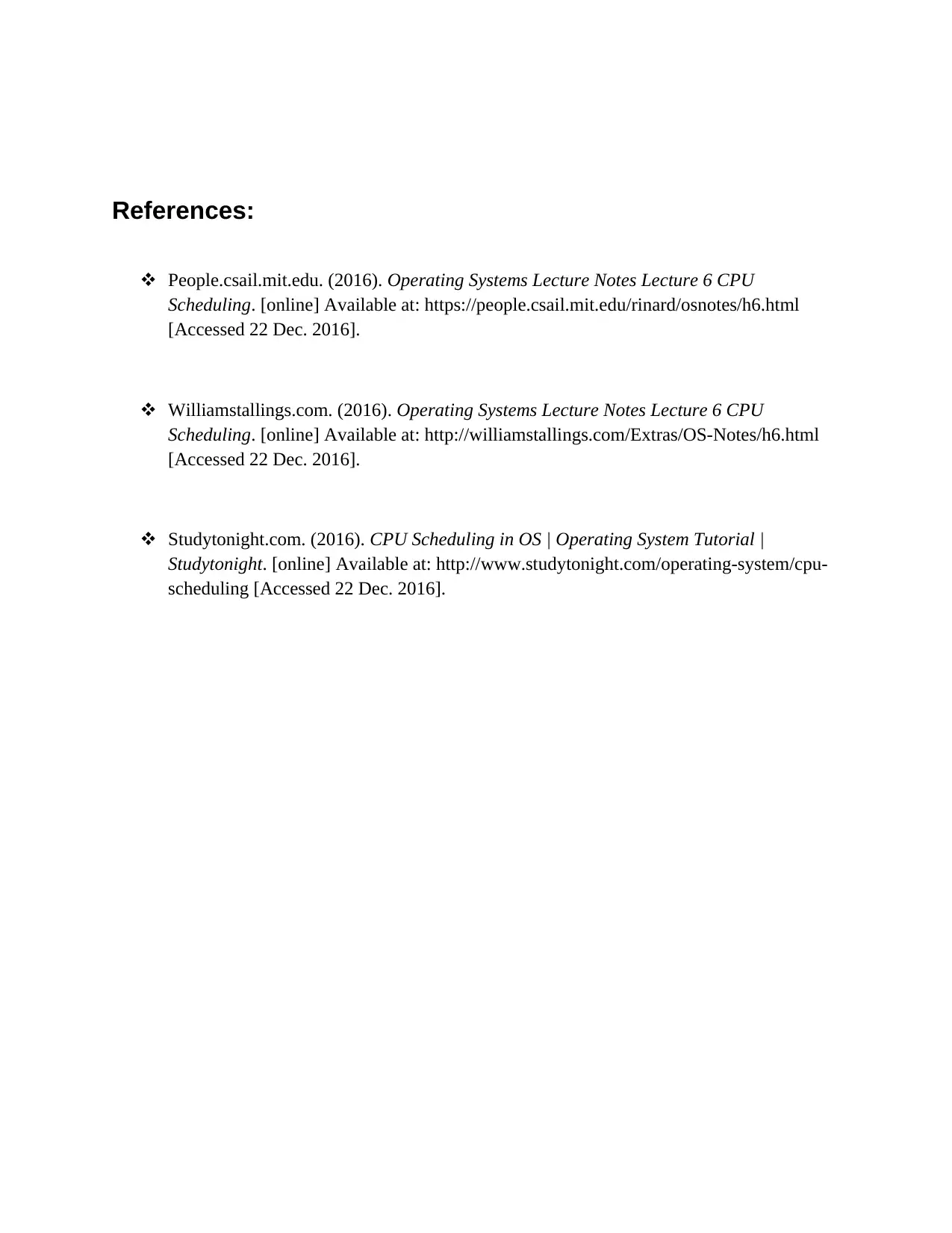FCFS, SJF, PR Scheduling Algorithm Comparison
VerifiedAdded on 2019/09/20
|4
|440
|406
Report
AI Summary
This report provides a detailed comparison of three CPU scheduling algorithms: First Come First Serve (FCFS), Shortest Job First (SJF), and Priority (PR). It explains how each algorithm works, including their abbreviations, execution methods, and whether they are preemptive or non-preemptive. The report also discusses the performance, implementation, advantages, and disadvantages of each algorithm, highlighting their suitability for different systems. FCFS is noted for its simplicity but poor performance, while SJF minimizes waiting time but can lead to starvation. PR offers good response for high-priority processes but may cause starvation for low-priority ones. The report concludes with references to relevant online resources.
1 out of 4











![[object Object]](/_next/static/media/star-bottom.7253800d.svg)